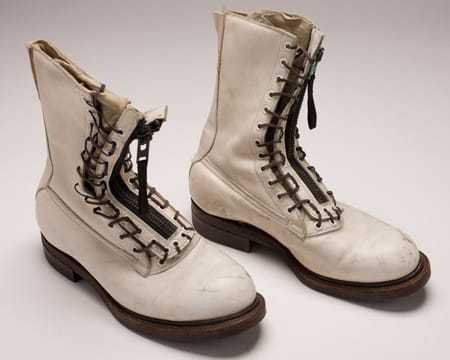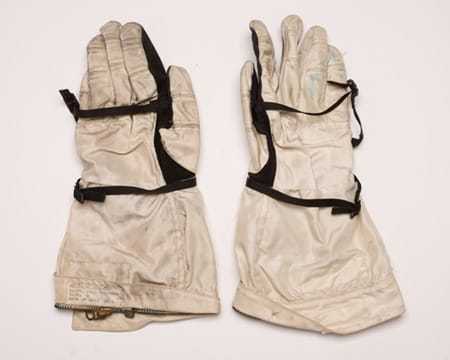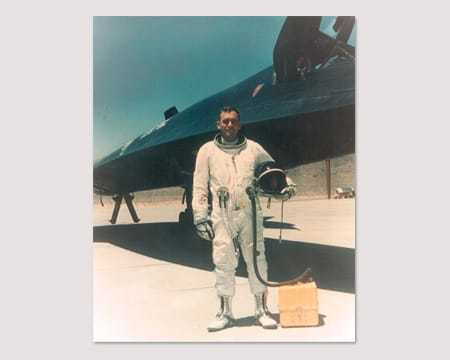Artifact Details

The A-12 pilot’s helmet included a breathing apparatus to support the pilot during depressurization.
Providing for A-12 pilots’ safety and comfort was difficult, as the external air temperatures would make the uninsulated cockpit feel like the inside of a moderately hot oven. To reduce the weight of the plane, Lockheed (who designed and built the aircraft) did not even try to insulate the aircraft’s interior; instead, it counted on the pilot’s suit to protect him. Pilots would have to wear a type of space suit with its own cooling, pressure control, oxygen supply, and other life-support capabilities.
Two Lockheed subcontractors, the David Clark Company and the Firewel Corporation, developed the S-901 full-pressure suit and oxygen-supply system based on ones created for pilots of the X-15 rocket aircraft. The aluminized outer layer and breathing apparatus would protect the pilot from heat radiated from the 400-degree-Fahrenheit windshield, the effects of depressurization, and the extreme cold encountered during a high-altitude bail-out. Each suit was custom made at a cost of $30,000 in the mid-1960s.
Additional Photos



Video
This video does not include text.
